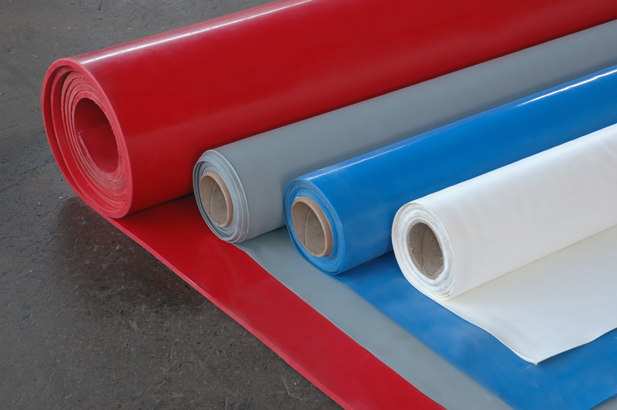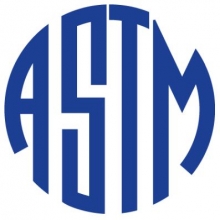Unravelling the Mystery of ASTM D 2000
At MacLellan Rubber we believe in working with our customers to improve your understanding of material specifications and in the process hopefully demystify what can easily been seen as the rubber industries attempt to hide behind complicated and often confusing terminology and over worded documents.
Using standards including ASTM is critical to industry because it ensures rubber material qualities, characteristics and performance are consistent and repeatable through different batches and producers providing the buyer with confidence that they can purchase from a variety of sources without risk of compromising quality.
The American Society of Testing and Materials (ASTM) originally developed the D2000 classification system to standardise the properties of rubber materials used within the automotive industry. But as is normal with such standards, they have over time become adopted by a variety of industries such is the purchasing power of the automotive industry.
Understanding an ASTM D 2000 Line Call Out, which can so easily look like a random collection of letters and numbers, is straight forward when you understand how to break it down into its constituent parts and what those parts actually mean. Once you understand the constituent parts it is no more challenging than reading a shopping list for your everyday materials.

Below is an example of a typical ASTM line call out:
ASTM D 2000 M
5
BG
610
A14 B14 E014 E034 F17
For the absolute beginners the first part of the code identifies the document name, which will change dependent upon the ASTM standard you may be reviewing.
The letter following the code and the refers to the unit of measure being used for the test results. In this instanceM denotes Metric and hence tensile strength will be measured in Megapascals (Mpa). If no M is present then the unit of measure would be Imperial and as such tensile strength would be measured in Pounds per Square Inch (psi).
The next portion of data refers to the grade of the material required and is scaled from 1 to 8, where 1 indicates a basic grade of material with minimum test requirements and 2 through to 8 indicates additional test requirements to ensure the correct material is required. The list of tests is detailed in the ASTM document.
We then have two letters, BG , which relate to the Type (heat resistance in a range of 70 300 Deg C) and Class (percentage volume swell in ASTM Oil No. 3 in a range up to 170%)of elastomer. The letters correspond to charted data in the ASTM D 2000 document where B is defined as an elastomer with heat resistance up to 100 Deg C and G indicates a maximum volume swell of 40%. In this example BG would be identified as a Nitrile.
The next group of three digits define the hardness and minimum tensile strength. The first digit identifies the hardness measured in Shore A +/- 5 degrees, this digit is multiplied by 10 and therefore corresponds to 60 Shore A. The second and third digits define the tensile strength either in Mpa where an M is part of the line call out, or PSI where there is no M . In this example 10 represents 10 Mpa which can be converted into PSI as necessary.
At this point we have identified that our material requirements are for a superior grade of material, non-commercial, manufactured from Nitrile to meet the heat and oil resistance criteria, with a hardness of 60 Degrees Shore A and tensile strength of 10 Mpa. We can now refine our definition through the supplementary test codes detailed in our line call out.
The supplementary test codes are presented as a Letter and two numbers, the Letter indicating the property being tested, the first number defining the test method and the third number the temperature that the test should be conducted at. There is a need to refer to tables within the ASTM D 2000 document to cross reference the relevant information and for the purposes of this document we will translate the appropriate data.
A14 translates as:
A = Heat Resistance
1 = Test Method D573 for 70 Hours
4 = Test Temperature of 100 Deg C
B14 translates as:
B = Compression Set
1 = Test Method D573 for 70 Hours
4 = Test Temperature of 100 Deg C
The scope of tests is comprehensive and in our example would include EO (Fluid Resistance) to test method D573 for 70 Hours at 100 Degrees C and test method D885 for 168 hours at 100 Degrees C, in addition F17 relates to Low Temperature Resistance down to 40 Deg C.
In unusual cases these codes may have a Z at the end which designates special test requirements as defined by an independent body and would typically relate to a material that is Type Approved and potentially unique to a material manufacturer.
From these supplementary test codes we have further refined our material selection to something rather more resilient than a standard or intermediate grade of Nitrile and can then match the full requirements to an existing material formulation or design a new formulation to suit.
We hope we have demonstrated that breaking down these line call outs into their constituent parts makes them fathomable and that the logic behind ASTM and other similar classification systems such as SAE J200, BS5176, MIL-R, and DTD is less daunting to assess.
Regrettably the plethora of existing standards and material codification systems does not stop interested parties from developing new ones and for this we can only ask why?
If you require help, advice or recommendations on any of these standards you can Ask George or contact our Technical Sales Team.
Simon Winfield
MacLellan Rubber Limited

|
|
|